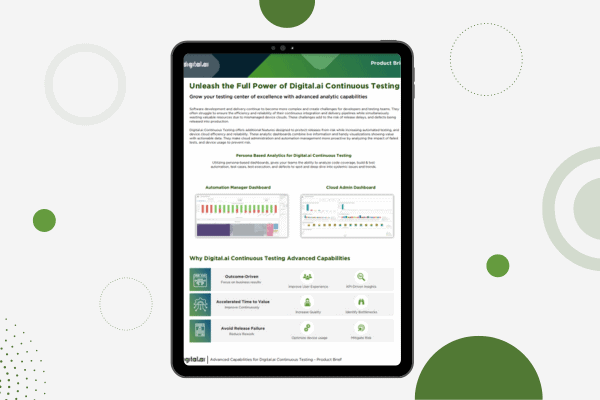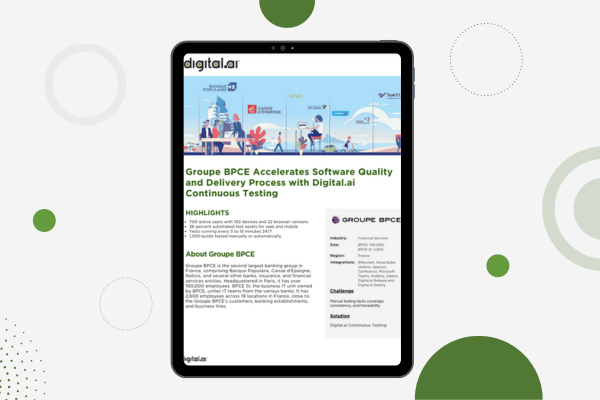Understanding the Importance of Accessibility Testing
Master accessibility testing to create inclusive websites. Learn WCAG principles, explore testing tools & techniques for success.
Table of Contents
As the software development landscape evolves accessibility testing is emerging as a required capability. This is compounded by the idea that organizations can gain traffic by designing inclusively. In an enterprise setting where focus is on DevOps int is supremely important to understand accessibility testing. It serves to ensure that digital products are not only functional but also accessible to all users, irrespective of their abilities. Once accessibility testing is integrated into the DevOps pipeline organizations can address potential barriers early in the lifecycle. It helps mitigate risk associated with non-compliance, legal repercussions, and reputational damage. Businesses are starting to prioritize inclusivity as societal awareness of accessibility issues heightens. This leaves accessibility testing as not only a technical requirement but a strategic investment fostering diversity, equity, and inclusion while bolstering brand reputation and market competitiveness.
Different Areas of Accessibility Testing
Accessibility testing covers a wide range of evaluations that ensure digital assets like web and mobile applications are accessible to all users. The focus is on two key categories:
- ADA Testing: Focuses on ensuring that a company’s digital assets comply with the legal requirements developed by the Americans with Disabilities Act (ADA). These often align with specific WCAG requirements. It helps US enterprises mitigate the risk of lawsuits by identifying and addressing accessibility barriers. What is important to note is that ADA compliance is a minimum standard. Solely relying on that for guidance might not ensure that your application has optimal user experiences for all users with disabilities.
- General Accessibility Testing: Takes a broader approach aiming to make digital assets usable for a wider range of disabilities, including visual, auditory, motor, cognitive, and speech impairments. It goes beyond regulations covered explicitly by ADA regulations. The focus on UX helps applications become functional for everyone, regardless of ability. The main aspects include keyboard navigation for users without a mouse, screen reader compatibility for users with visual impairments, sufficient color contrast, and clear, logical navigation structures to aid users with cognitive disabilities.
Principles of Accessibility Testing
The Web Content Accessibility Guidelines (WCAG) established four core principles to ensure that digital assets are usable by everyone, regardless of their abilities.
Perceivable Information
Ensures that content is accessible and understandable by any users with visual, auditory, or other sensory limitations. This includes providing Alt text for images, offering captions and transcripts for videos, and ensuring sufficient color contrast between text and background to improve readability for users with visual impairments. Additionally, using non-visual indicators alongside audio cues, aides users with different sensory abilities.
Operable User Interface
This focuses on effective navigation and interaction with application for users with motor or cognitive limitations. The point is to ensure all functionality is accessible with a keyboard. Making menus intuitive and labels clear helps make navigation logical so users with cognitive disabilities orient themselves easily. Interfaces must also be compatible with assistive technologies like screen readers and voice control this influences independence from users with motor limitations.
Understandable Information and Interface
Here we are emphasizing clarity and ease of comprehension for users with varying cognitive abilities. Practically speaking this refers to prioritizing plain language and avoiding technical jargon or overly complex sentence structures. Content should be structured logically with clear headings, subheadings, and bullet points to help users process information better. Maintaining consistent terms through the application avoids unnecessary complexity and helps create interfaces that are not only functional but also readily understood by a broader range of users.
Robust Content and Reliable Interpretation
It is important to ensure robust content and reliable interpretation for users who rely on assistive technologies. Content must be presented in a way that can be understood and interacted with consistently. Using valid HTML code and semantic markup provides a clear structure for content that allows assistive technologies to navigate and interpret the information accurately. Providing content in a format that can be easily resized and reflowed is essential for users with different screen sizes or zoom preferences. It is also important to avoid technologies that are not well-supported by assistive tools to eliminate barriers for users who use them to interact.
Aspects of Accessibility Testing
These most crucial aspects of Accessibility testing guarantee that digital products are usable and cater to a wide range of users.
- Compliance: Organizations must adhere to established accessibility standards and regulations, like the Americans with Disabilities Act (ADA) and the Web Content Accessibility Guidelines (WCAG) An accessibility testing tool will automate accessibility roadblock checks and streamline the process.
- Usability: There is more to accessibility testing beyond meeting compliance. Applications must be evaluated to how users with different abilities interact with it and access hindering aspects must be identified.
- Device Compatibility: With the technological landscape so fragmented digital products need to function seamlessly across various devices, encompassing desktops, tablets, and smartphones. It ensures accessibility for users who rely on different devices to access information and interact online.
- Design and Navigation: These aspects of digital interfaces must be examined. This includes factors such as color contrast, font size for readability, and the logical placement of interactive components to create an intuitive and accessible user experience.
Accessibility Testing Guidelines
When building a web or mobile application the desire is that everyone can use it easily including people with disabilities like vision impairments, hearing loss, or mobility limitations. Guidelines for accessibility testing are like a roadmap helping developers and designers ensure their apps are accessible. The guidelines are based on international standards like the World Wide Web Consortium (W3C). If you follow these guidelines during testing it will help catch any potential roadblocks that might prevent someone with a disability from using a digital product.
These guidelines benefit the testing process in the following ways.
- Structured Approach: The guidelines provide a clear and organized method to test different accessibility aspects.
- Comprehensive Testing: They ensure testing teams do not miss any crucial accessibility checks.
- Reliable Results: Following the guidelines helps teams test in a consistent and accurate way.
- Clear Communication: The guidelines use common accessibility terms, which make it easier for developers, and testers to understand the process and discuss any accessibility issues that arise.
Implementing Accessibility Testing
The key to implementing accessibility testing is making sure that software is simple and easy to use for everyone. Accessibility must be built in from the very beginning, not as an afterthought.
Here’s how:
- Accessibility plans: As projects develop consider accessibility needs at the earliest stages of development. nt. Consider things like clear labels, keyboard navigation, and features that work with screen readers.
- Test regularly: Build accessibility testing into regular testing stages throughout the development process. This helps catch and fix issues early on, before they become expensive problems.
- Train the team: Make sure everyone involved in making the software understands accessibility. This can be done through workshops or by providing resources like cheat sheets or online tutorials.
Tools Used in Accessibility Testing
There are several different types of tools that will help check your team’s work.
- Developer Tools: These are like code-checkers for accessibility. They point out potential problems during development, so teams can fix them right away. Examples include Axe, Pa11y, and WAVE.
- Compliance checkers: These tools make sure your website follows accessibility rules, kind of like following building codes. They check clear labels on buttons and use of color contrast for people with vision impairments. Examples include Tenon, SortSite, and AccessLint.
- All-in-one testers: These tools are like an accessibility toolbox. They can check for usability issues (how easy it is to use), make sure the site works on different devices (phones, laptops, etc.), and cover other accessibility concerns. Examples include Digital.ai Continuous Testing, Accessibility Insights, Google Lighthouse, and AChecker.
Manual Versus Automated Accessibility Testing
There are two main ways to check if your web or mobile app is accessible to everyone. The first is by using real people and the second is with special software.
- Manual testing: Is similar to having someone with different abilities try out your website ato see if they can use it easily. They’ll follow guidelines to check things like clear labels, readable text, and working with screen readers for people with vision issues. It gives teams a real-world sense of how accessible their product is.
- Automated testing: Starts with software scanning a team’s web and mobile apps for common issues and points them out. It’s fast and efficient, but it might miss some things that a human tester would catch.
Importance of Inclusive Design in Accessibility Testing
Inclusive design is what ensures that everyone who engages with your web and mobile applications can interact and access it as they please. It means creating something usable by anyone regardless of their ability level. It is important because it will help enterprises reach a larger audience that they can convert into customers. Baking the process into the earliest code iterations gives developers the ability to catch accessibility issues early with inclusive design saving them time and money fixing them later.
Common Challenges in Accessibility Testing
As important as accessibility testing is there are some roadblocks that come up during the process.
For Example:
- Mazelike web and mobile apps: There are many that have complicated forms or hard to read text. It can be extra confusing for people with disabilities. With accessibility testing everthing is checked to ensure ease of navigation.
- Tech Trends: The tech world moves fast and new features and ways of building websites are constantly popping up. Accessibility tools and methods need to be updated regularly to make sure they can handle these new technologies and catch any accessibility issues they might create.
- Finding the experts: Testing for accessibility requires specific knowledge and skills, like understanding how people with different disabilities use websites and what tools they might need.




